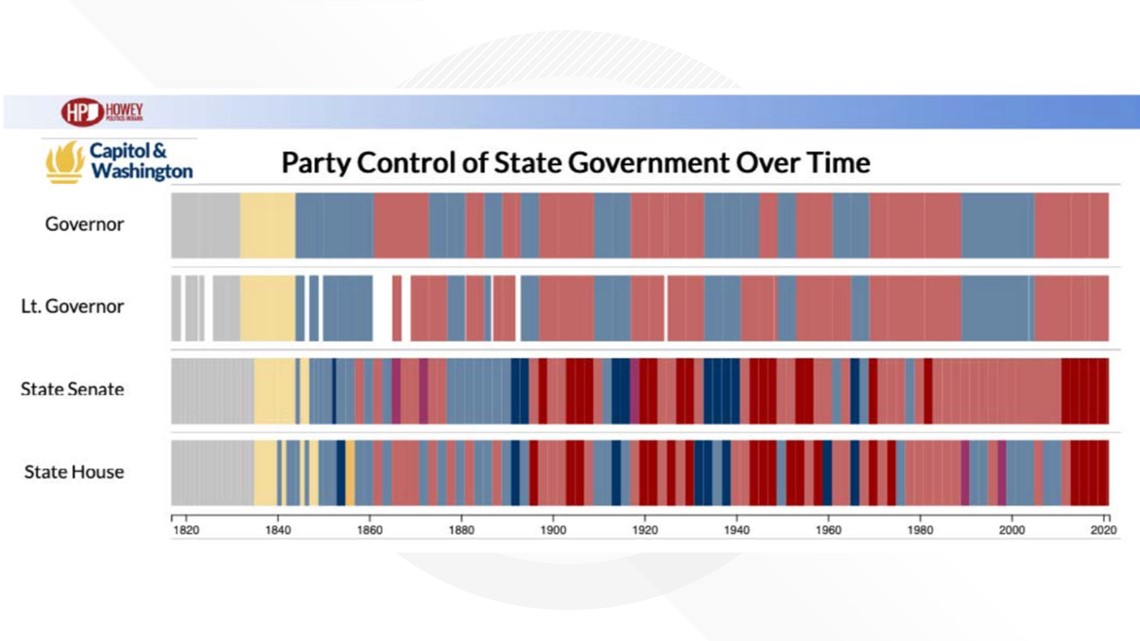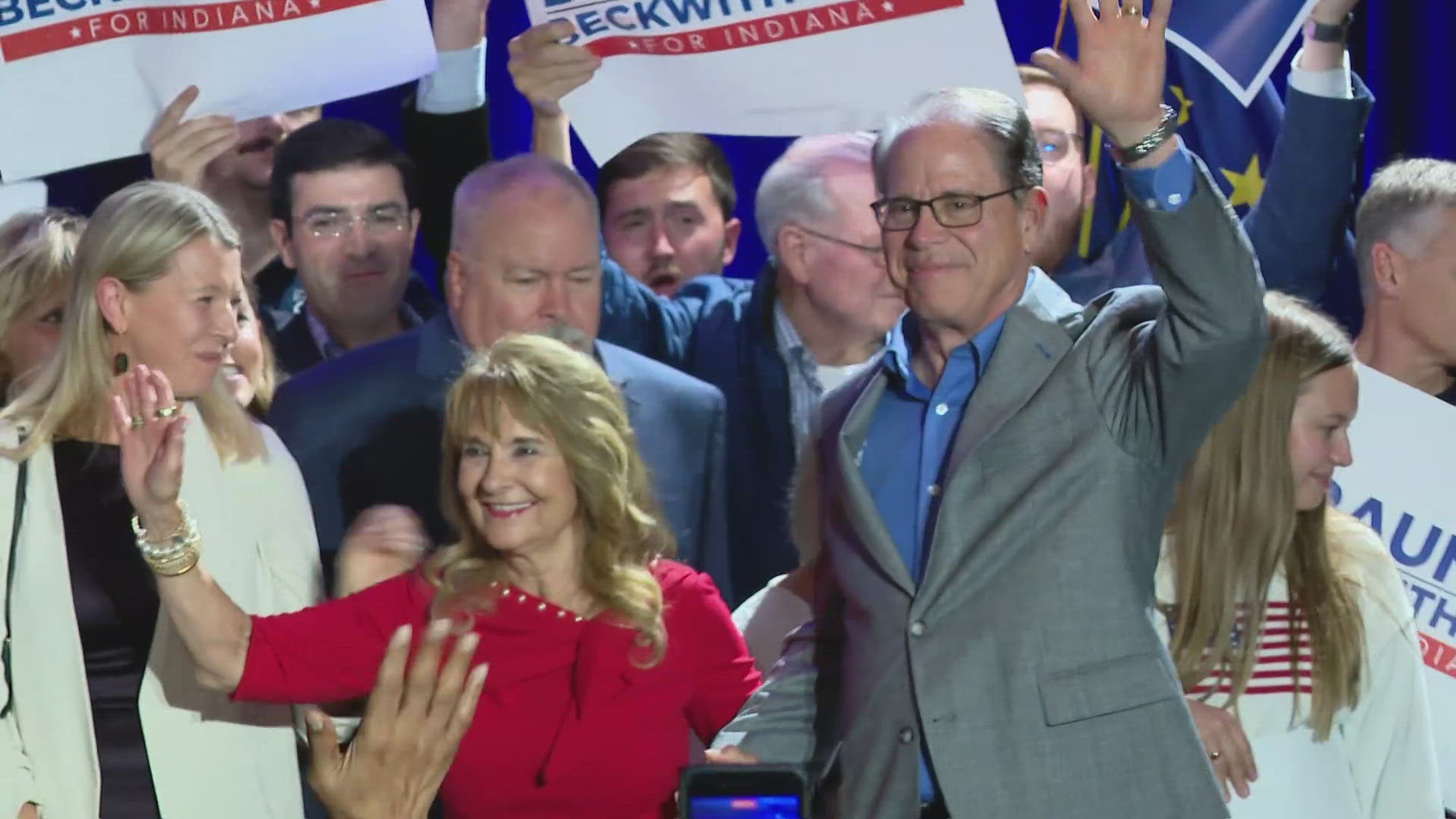INDIANAPOLIS — We are now in the "Super Majority Era" of Indiana governance. While there have been 20 Democratic House and Senate super majorities, and 49 for Republicans over the past two centuries, never have these decks been stacked like they are today with both chambers so Republican that they can do business without a single Democrat present.
According to former speakers Brian Bosma and John Gregg, current Speaker Todd Huston and Senate President Pro Tempore Rod Bray are working with caucuses that are too big, with the bipartisan filters removed.
As the General Assembly heads toward an April 21 sine die, Huston and Bray are attempting to shepherd their super majority caucuses (39 in the Senate, 71 in the House) on an array of issues that could alter the state’s future pandemic responses, how it deals with municipalities and manages its natural resources ranging from wetlands, to CAFOs, to 5G cell tower siting, local ordinances, as well as abortion.
CapitolandWashington blog publisher Trevor Foughty charted the history of General Assembly power, with the dark reds and blues denoting super majorities on his charts.


“It immediately becomes obvious that we are now in the longest stretch of super majority control in either chamber in history, and certainly for both chambers at the same time,” Foughty said. “There have been super majorities a lot more often than you would think.”
Super majorities historically occur under a governor of the same party. They tend to happen in nationalized elections, as Hoosier Democrats dominated following the New Deal election of President Franklin D. Roosevelt in 1932, and the 1964 landslide victory by President Lyndon B. Johnson. Democrats have held 12 super majorities in the Senate and eight in the House.
Senate Republicans have held 20 super majorities, occurring during the run-up to World War I, during the Ku Klux Klan era of the 1920s, two more in the late Great Depression era, three more during the end of World War II and beyond, and now five consecutive.
House Republicans have had 19, including the four current cycles beginning in 2014, three during the end of World War II, two during the Eisenhower administration, and two during the era of Gov. Doc Bowen.
The current super majority era coincides with the historic decline of the Indiana Democratic Party, which began with Mitch Daniels' defeat of Gov. Joe Kernan in 2004. While House Democrats held simple majorities after the 2006 and 2008 elections, Daniels and Bosma recruited heavily in 2010, winning a 60-40 majority in 2010, giving them control of the 2011 reapportionment. Those current maps have led to the 69-seat super majority in 2012, 71 seats in 2014, 70 seats in 2016, 67 seats in 2018, and 71 seats in 2020.
The pandemic now has GOP super majorities poised to alter the balance of power with several bills now sitting on Gov. Eric Holcomb's desk awaiting his signature or veto. HEA1123 would allow the General Assembly to call itself into special session to deal with future public emergencies, passing 64-33 in the House and 37-10 in the Senate. Holcomb promised to veto that bill two weeks ago, insisting it is unconstitutional. The House voted to override his veto as this column was being written, 57-26, with the Senate expected to follow suit.
Another bill would allow county commissioners to override local health officials in declaring public health emergencies and another bill would exempt religious gatherings from state health mandates.
Former House speaker Gregg, who lost to Holcomb in 2016, wrote an op-ed, saying, "Never have I seen an assault on our state's chief executive like what is occurring in the current legislative session. Because Gov. Holcomb followed the advice of public health experts and instituted a statewide mask mandate in the middle of a global pandemic, a group of his fellow Republicans are now out for revenge.
"I fully appreciate the balance of power required amongst the three branches of government, but this proposal is a misguided step too far," Gregg continued. "Because some Republican lawmakers did not agree with Gov. Holcomb, they are seeking revenge by attempting to weaken the office of governor for all future occupants. It is irresponsible at best and dangerous at worst."
Asked by Howey Politics Indiana about the difference between majorities and super majorities, Gregg explained there are "Three types of majority caucus: Narrow, standard majority and super."
"In a narrow caucus, everybody stays in line and acts as a team," Gregg began. "If you've got the standard majority you can have a few souls that wander periodically, but they don’t wander far or often. A super majority would be a nightmare, too many free agents, no discipline, no vision, no common purpose and many, many splinter groups. Super majorities are the result of gerrymandering and straight ticket voting."
Asked the same question, Bosma, a Republican, said, "The short answer is smaller majorities lead to more unity and singular purpose in a caucus. The big group is more likely to have factions and distractions which distract leaders from their agenda to manage people. I'd say the sweet spot is around 58."
Had the Indiana Democratic Party been competitive over the past decade, Holcomb might have found additional support from his loyal opposition.
The columnist is publisher of Howey Politics Indiana at www.howeypolitics.com. Find Howey on Facebook and Twitter @hwypol.



